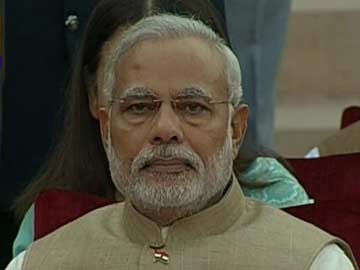Jaswant Singh
NEW DELHI – Asia’s lack of institutions to ameliorate regional tensions is often lamented. But greater Asian unity may be arising by the backdoor, in the form of new and impressive infrastructure links.
Today’s efforts to expand regional infrastructure projects are all the more remarkable for linking even countries locked in diplomatic, and sometimes open, conflict. New bus routes between India and Pakistan may not make headlines, but they deliver a degree of normalcy to relations riddled with mistrust. Elsewhere, rail links between China and Vietnam, road developments connecting India and Bangladesh, and new ports, harbors, and pipelines in Myanmar and Pakistan are forging a new form of economic unity alongside the region’s manufacturing supply chains.
Such ventures now dot Asia’s geography, even as tensions over unsettled boundaries and sovereignty claims are fueling turbulence. Consider Afghanistan, which faces yet another phase of internal dislocation. There, India nonetheless continues to build a strategic ring road around the country, as well as a vitally important dam at Salma. And a gas pipeline from Turkmenistan to Pakistan, which would traverse the country, is coming closer to reality.
Then there is the Bay of Bengal, where Chinese infrastructure investment is set to transform the backward Myanmar seaside town of Kyaukpyu and the surrounding region by tapping offshore gas fields and constructing a pipeline to Yunnan Province in southern China. These initiatives reflect not only China’s voracious drive for natural resources and new trade routes, but also Myanmar’s own plans to create a “mini-Singapore” within its borders.
Of course, China is not investing in such infrastructure out of altruism. Almost a decade ago, outgoing Chinese President Hu Jintao identified the country’s “Malacca Dilemma,” referring to the channel between the Malay Peninsula and the Indonesian island of Sumatra that connects the Indian and Pacific Oceans, as a grave strategic threat. Roughly 80% of China’s energy imports pass through that potential chokepoint, which is mostly policed by the US Navy. The links now being developed in Myanmar will reduce China’s dependence on the Strait of Malacca by more than one-third.
The plans are illustrative of Myanmar’s pragmatic new outlook. Sandwiched between China and India, Myanmar, which had earlier suspended construction of the Chinese-backed Myitsone Dam, may one day be the link that facilitates closer economic ties between the two giants. Japan, not wishing to be left out of the great infrastructure game in Myanmar, is investing billions in port reconstruction.
To the west, in Pakistan, one can travel on the Makran coast along a road built with Chinese assistance, eventually coming to the ancient fishing port of Gwadar, with its natural deep-water harbor. With a development plan by the Port of Singapore Authority having fallen through, the China Overseas Ports Holding Company has taken over, raising strategic concerns in India, Japan, and the US. Indeed, despite intense opposition from the US, China’s project in Gwadar may soon be followed by a joint project with Iran to lay a pipeline carrying 750 million cubic feet of natural gas per day.
China is also actively pursuing the construction of a Pan-Asia Railroad, which, when complete, will form an enormous circular route. Starting in Kunming in Yunnan Province, it will extend through Myanmar and south to Bangkok, where a spur will traverse Malaysia to Singapore. From Bangkok, the line will run east through Cambodia and north through Vietnam to Hanoi, then through Laos and back to Kunming.
This sounds like an enormous undertaking, and it is; but, with some rail lines already existing (some for many decades), the project could be completed by the 2015 target date. The Association of Southeast Asian Nations’ long-held dream of unity might first arrive by rail.
Meanwhile, India has already opened up road communications linking the East Indian state of Manipur to North Myanmar, with India’s Border Roads Organization completing the first all-weather road connecting the two countries. And, in Central Asia, India has projects at Ayni Air Base near Dushanbe in Tajikistan, including a functioning field hospital (where the late Ahmed Shah Massoud, the leader of Afghanistan’s anti-Soviet war, died following an assassination attempt on September 9, 2001).
These infrastructure investments clearly hold the potential to bind Asia closer together than ever before. But there are geopolitical risks in this scramble for development. Predictably, the West is ramping up its aid, particularly in Myanmar, where the streets of Yangon are now choked with traffic created by aid and government development agencies (and investors).
Of course, tension is probably unavoidable as these links develop. Tellingly, Myanmar’s pro-democracy leader Aung San Suu Kyi has spoken of her country in terms of the “vicinity of China, the geographical distance of the US, and the cultural linkages with India.” The question is whether Asia’s infrastructure investments, particularly those by China, will be used to create Asian satellites of the Middle Kingdom, or become tools to be used among equals.
Asia can use its geography either to keep its states isolated, or to trade with one another and develop to the benefit of all. After centuries of isolation and colonial slumber, the region is now awake to the potential benefits of greater unity. It will not matter that the infrastructure may not have been built solely for that purpose if Asia’s leaders keep their eyes on prosperity, rather than only on power.
Source: Project Syndicate









